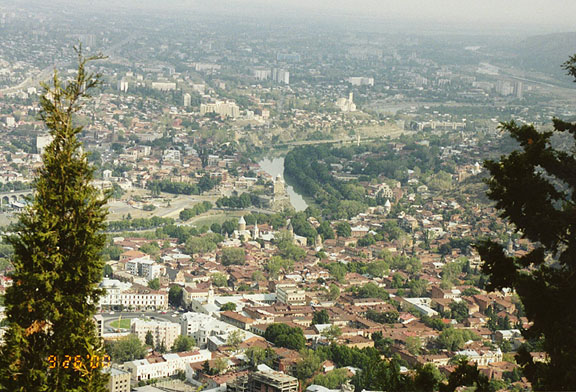

Tbilisi
capital city of
Georgia

view of the city
T’bilisi or Tbilisi, formerly Tiflis, capital and largest city of Georgia, in the east central part of the country. The city, situated on the Kura River in a valley sheltered by the Caucasus Mountains, is a major economic, transportation, and cultural center.
noted for the balcony houses
Among the principal manufactures are processed food, machinery, textiles, railroad equipment, printed materials, leather goods, and wine. T’bilisi is located at the southern end of the Georgian Military Road and is served by the Transcaucasian Railroad.
Ministry of Road Building
(monster building)It is noted for its ancient churches, including the 5th-century Cathedral of Zion and the 6th-century Saint David's monastery. T’bilisi is the seat of a university (1918) and the Georgian Academy of Sciences and has several theaters and museums.
modern TV tower
Although settlements have existed on the site since 4000BC, T’bilisi was not mentioned until the 4th century. In the 5th century it became the capital of Iberia, a kingdom of eastern Georgia. The city suffered frequently during succeeding centuries from raids by Byzantines, Arabs, Persians, Mongols, Seljuk Turks, and tribes of the region of Caucasia.
row of money changers
It was, however, the capital of an independent Georgian state in the 12th and 13th centuries. The last great raid occurred in 1795, when Persian troops invaded and sacked the city. T’bilisi came under Russian rule in 1801.
Soviet style apartment block
It was made the capital of the newly created Georgian Soviet Socialist Republic (SSR) in 1936, and in 1991 it became the capital of an independent Georgia. Population (1990 estimate) 1,268,000.
Coke advertisement
singers at the table
![]()
![]()